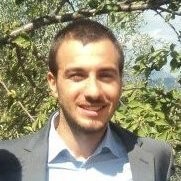Date: Thursday, 27 June 2024
Time: 13:45 - 14:45 CEST
Session code 2DO.8
GHG saving potentials: latest developments
Biochar as Tradable Carbon Removal Option: The Long Road Across Science, Policiesa and Markets
Short Introductive summary
Biochar consists of mostly biogenic, solid carbon derived from thermochemical processes of biomass as pyrolysis or gasification. Being stable, organic carbon with a chemical structure similar to fossil-based coal, it is considered a promising climate change mitigation solution due to its long-term persistence in the soil. This aim of this paper is to investigate the GHG emissions assessment among the available options according to the EU legislation, scientific literature and recent voluntary initiatives. Specific case studies considering different feedstock sources, technologies and applications are selected and discussed. Finally, the work addresses the biogenic carbon sequestration potential according to the final use, including all emissions from the supply chain to the final utilization (as a carbon storage solution for the carbon market or for the use in industry replacing fossil carbon).
Presenter

Marco BUFFI
European Commission Joint Research Centre, Institute for Energy - Renewable Energy Unit
Presenter's biography
Doctor of Industrial Engineering, specialized in bioenergy, biofuels, hydrogen and alternative fuels. He is an expert in technological and energy assessments for such categories, as well as in their GHGs emissions accounting. He is currently scientific project officer at JRC Ispra.
Biographies and Short introductive summaries are supplied directly by presenters and are published here unedited
Co-authors:
O. Hurtig, European Commission Joint Research Centre, Ispra, ITALY
N. Scarlat, European Commission Joint Research Centre, Ispra, ITALY
Session reference: 2DO.8.1
